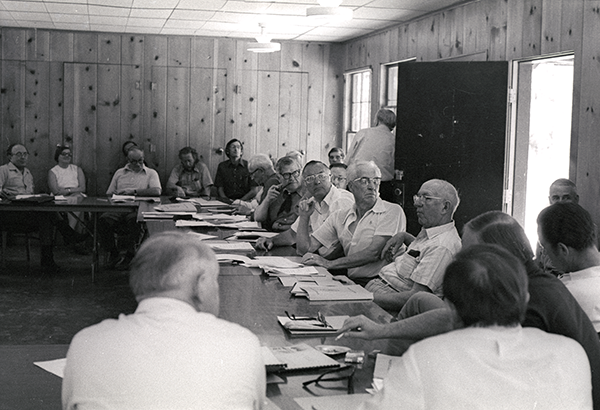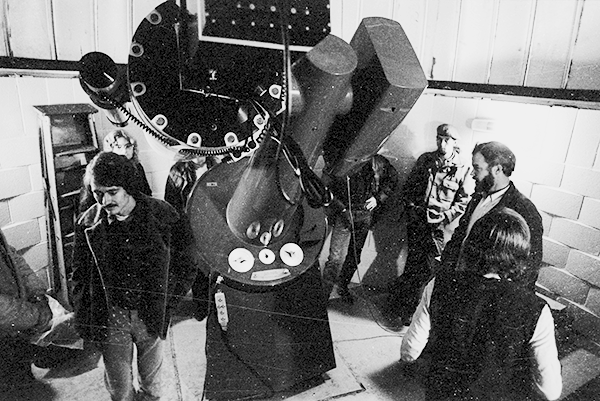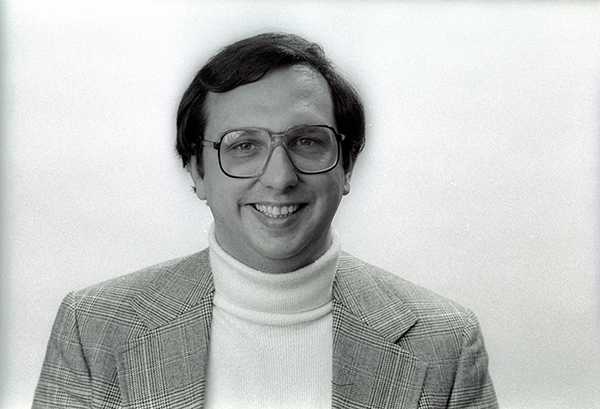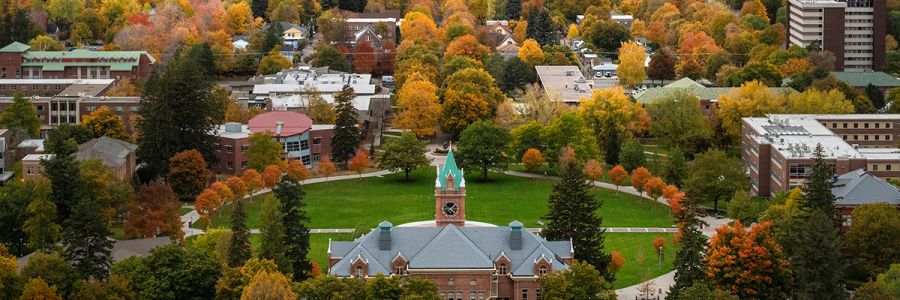Sustained and Strengthened: Philanthropy Elevated the University During a Decade of Resilience
Amid the stagnant economic times of the 1970s, donor investment solidified UM as a global leader in conservation and natural science.
June 26, 2025
This story is part of “75 Years of Impact,” a celebration marking the University of Montana Foundation’s 75th anniversary. Throughout the year the Foundation will share stories illustrating the profound impact of donors’ philanthropy at the University of Montana across the decades. To learn more visit SupportUM.org/UMF-75.
During its first two decades, the University of Montana Foundation helped the University’s giving community blossom into a powerful collective capable of inspiring enduring change and advancement.
In the 1950s and ’60s, donors seized the opportunity to transform UM into a national and global hub of education, culture and discovery.
As the 1970s dawned, however, that momentum met significant headwinds.
Growing economic stagnation and political unrest over the Vietnam War challenged universities nationwide. Educational costs rose while grants, loans and work-study programs declined.
At UM, administrators faced growing uncertainty about the future of higher education in Montana. Even as enrollment remained steady, budget shortfalls loomed.
With funding levels in flux, private philanthropy became even more essential to meeting the critical needs of the University, supporting its ability to serve students and expand its economic impact across the state. Confronted with this reality, forward-thinking donors rose to the moment, rallying to elevate research efforts and academic programs through facility improvements, faculty support and student scholarships.
By the end of the decade, UM emerged not only sustained but also strengthened as a world-class and accessible institution serving Montana and beyond — and many of the contributions and improvements launched during the ’70s still support students and faculty today.
Preserving Montana’s Natural Resources
In January 1970, renowned scientist Dr. Wendell Mordy addressed the Foundation’s Board of Trustees with a bold prediction: “The environment will be the issue of our time.”
This, Mordy said, presented a unique opportunity for the University — as the state’s abundant natural resources positioned it to become the nation’s “intellectual center for conservation.”
At the time of his remarks, Mordy, founding director of the Desert Research Institute at the University of Nevada, was consulting for UM as it sought to advance education and exploration opportunities for students and faculty around the sustainable management of forests, waterways and wildlife.
Donors and Trustees embraced Mordy’s message, and over the next decade increasingly prioritized natural science and environmental initiatives, moving to protect Montana’s breathtaking wild spaces and leverage the University’s outdoor properties into dynamic living laboratories.
Lubrecht Experimental Forest
Since 1937, Lubrecht Experimental Forest has served as an experiential classroom for students studying forestry, wildlife biology, resource conservation and other disciplines in the W.A. Franke College of Forestry and Conservation and departments across campus. Throughout the 1970s Foundation Trustees prioritized the Lubrecht Land Acquisition Program, which sought to secure private support and public cooperation to expand the Forest’s boundaries to solidify it as a vital, contiguous center for education and public engagement.

The Foundation also launched the process of securing private funding for an on-site conference center at the Forest to host gatherings, increase community outreach and provide office, classroom and laboratory space. With a grant from the M.J. Murdock Charitable Trust and private donor support, that effort was completed in 1982 with the construction of the Castles Forestry Center. The facility was dedicated the following year.
Today, Lubrecht serves as a national center for inquiry and policy development in forestry, resource management and ecosystem science. Through immersive training and fieldwork, the forestry and conservation leaders of tomorrow gain the skills needed to confront critical issues facing the West.
Faculty and students engage with private landowners and public agencies throughout the Blackfoot Valley to conduct influential research in areas such as forest hydrology, fire dynamics and climate resilience.
Flathead Lake Biological Station
During the 1970s, the Foundation’s donors also worked closely with the Flathead Lake Biological Station — a world-renowned aquatic research and education facility, and the second oldest such field station in North America. This work included funding key winterization projects and, in 1975, the purchase of a new research vessel.
Today, philanthropic investment continues to be a difference-maker at FLBS, supporting around 30% of the Bio Station's annual budget as it advances cutting-edge research, monitoring and education from its home on one of the world’s most pristine aquatic ecosystems. In 2024, the Bio Station celebrated its 125th year with its Anniversary Initiative, which has raised over $8.5 million in private support for research, water quality monitoring, facility maintenance and modernization, as well as student success at the college and K-12 levels.
An actively engaged donor community is also working to provide infrastructure upgrades with the construction of the Flathead Discovery Center, a new home for the future of aquatic science and education, to better accommodate the FLBS’ ever-expanding education programs, growing staff and to support critical administration for the sustainability of its operations.
Blue Mountain Observatory
In 1971, donor support aided in opening Montana’s first astronomical research facility: the Blue Mountain Observatory. Through private gifts, along with financial support from the National Science Foundation and student fees, UM installed what at the time was the state’s most powerful telescope at Blue Mountain, near Missoula.
Today, it serves as a vital training ground for students pursuing the only undergraduate astronomy program in Montana. The facility offers hands-on experience in celestial observation as well as science communication and outreach, fostering public engagement through summer open houses and stargazing nights.

Lasting Legacies: The Genesis of Planned Giving
The 1970s also saw a surge in interest in estate planning as a powerful tool for giving.
At UM, one notable example of this national trend was a gift from Mary Elrod Ferguson, who ensured that her family’s generational legacy would live on at the University before she passed away in 1975.
A 1911 UM graduate, biology instructor and longtime dean of women, Elrod Ferguson arranged for her will to establish a scholarship endowment in remembrance of her father, who founded the Flathead Lake Biological Station in 1899.
According to a 1975 news release, Elrod Ferguson “virtually grew up” at the station, and the fund she established supported student scholarships there.

The Foundation received several other notable bequests during the decade, that continue to provide valued support for UM students. Bernice A. Gleed included a bequest in her estate plan to establish a scholarship endowment that continues to support pre-med students, while Billie Jean Bright established the George E. Bright Fellowship endowment for forest management graduate students.
By 1978, Trustees recognized the potentially transformative power of estate giving and began hosting public seminars on the subject. In 1979, it formally launched its Deferred Gifts Program, the precursor to today’s Office of Planned Giving.
Today, the Foundation’s Office of Planned Giving continues to help donors make lasting contributions that preserve access to exceptional education at UM for future generations. The scope of the Office’s work is broader than ever before, offering a wide variety of tax-advantaged and otherwise beneficial giving options, including charitable gift annuities, charitable remainder trusts, qualified charitable distributions and more.
The Rise of the Excellence Fund
Spearheaded by a group of dedicated alumni and Missoula business leaders, fall 1978 saw the launch the University's Excellence Fund.
Building on the success of the earlier President’s Fund — UM’s primary discretionary fund since the 1950s — the Excellence Fund is comprised of flexible funds given by donors to help address high-priority needs.
The results were immediate. What began as a local community effort quickly grew into a signature element of giving at UM.
By academic year 1979–80, the Excellence Fund exceeded its annual $175,000 goal by more than $5,000, supporting faculty development, library upgrades, technology improvements and alumni outreach.
Donor support for the Excellence Fund reflected the evolution of private support and the community's continued commitment to UM. Today, donors continue to give to this cornerstone fund, empowering the University president to meet critical needs and fund dynamic initiatives as they arise.
Setting the Stage for a Bigger, Brighter Future
The economic pressures of the 1970s forged the UM Foundation and its donors into a steadfast force for the University.
In 1979, the Foundation completed its first nationwide search for executive leadership, hiring Allan Vannini as Director. By early 1980, Vannini reported record-breaking fundraising success, including landmark gifts from three family foundations, which totaled nearly $1 million.
One of those gifts funded the construction of a groundbreaking freshwater laboratory at the Flathead Lake Biological Station — the first of its kind in the Pacific Northwest — elevating UM’s capacity to advance freshwater science.
This and other gifts put an exclamation point on a decade where donors expanded UM's leadership in ecological research at a defining moment in environmental history.

Throughout the 1970s, significant donor contributions helped the University's natural science departments generate data and insights that shaped resource management practices, informed policy decisions and supported public understanding of these pivotal issues. The decade underscored how private philanthropy could propel the University to the forefront of environmental issues — preserving Montana’s natural heritage while addressing global ecological challenges.
The vision, cohesion and perseverance of volunteers and contributors to the UM Foundation also laid the groundwork for future success, ensuring that the University could continue to serve as a beacon of innovation and opportunity.
“Success in fundraising is reached through cooperation,” Vannini wrote in his director’s report in July 1979. “It is because of this atmosphere of involvement that I believe UM’s most successful years are still ahead.”
To learn more about the Foundation’s 75th anniversary and read feature stories spanning the decades, please visit SupportUM.org/UMF-75.
The information on this website was compiled from a variety of sources, including records held by the UM Foundation and the Maureen and Mike Mansfield Library Archives and Special Collections. The UM Foundation has made its best efforts to provide an accurate representation of events, people, entities, names, activities and data. However, the information presented should not be considered a definitive historical record.
